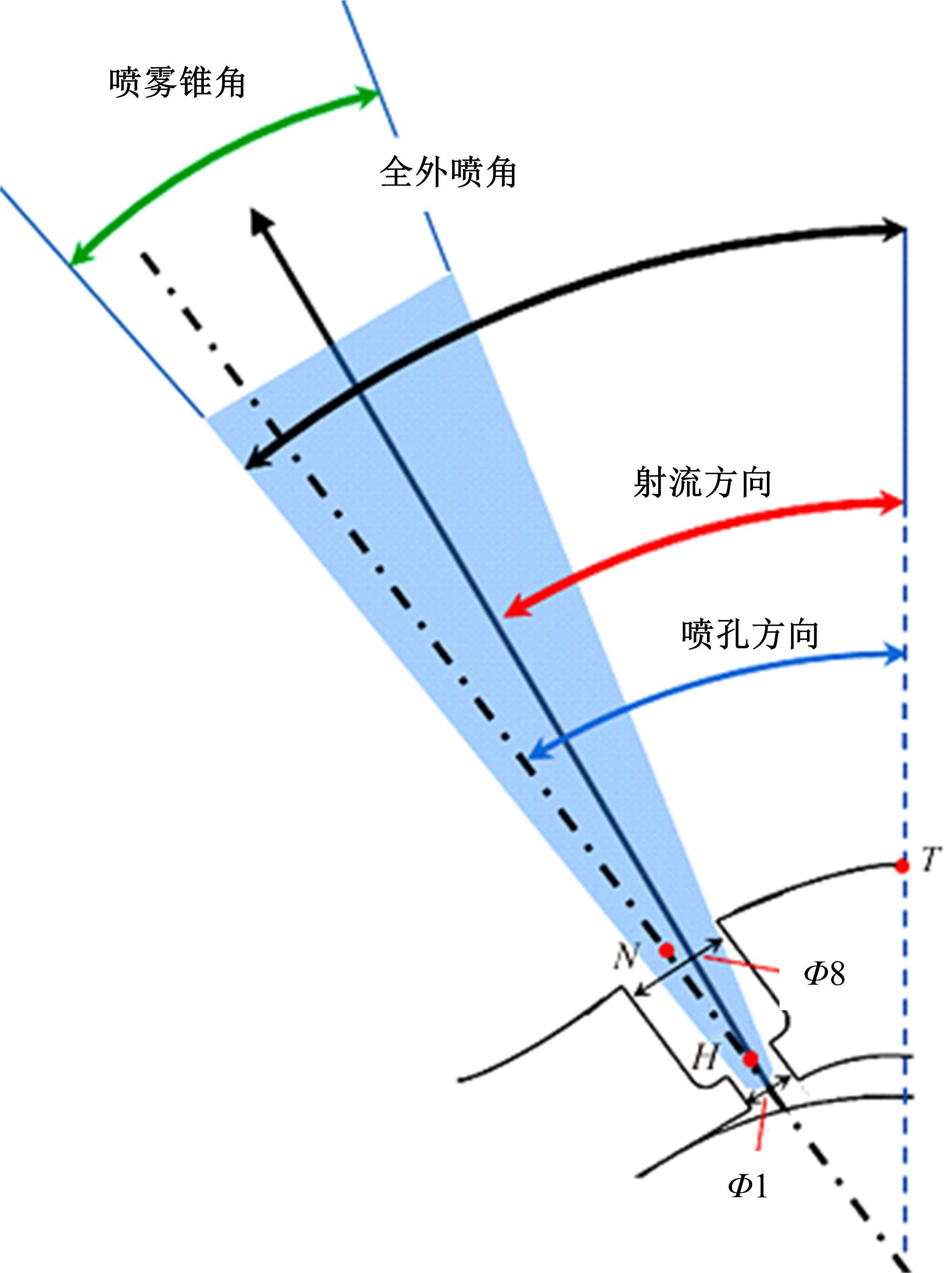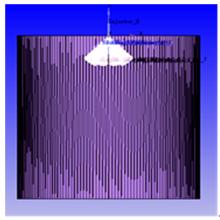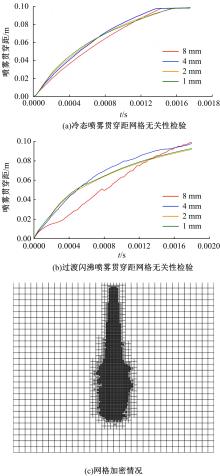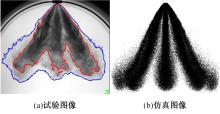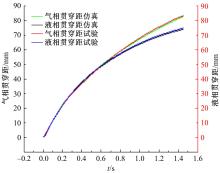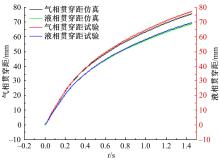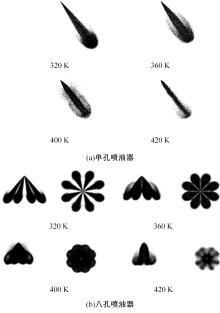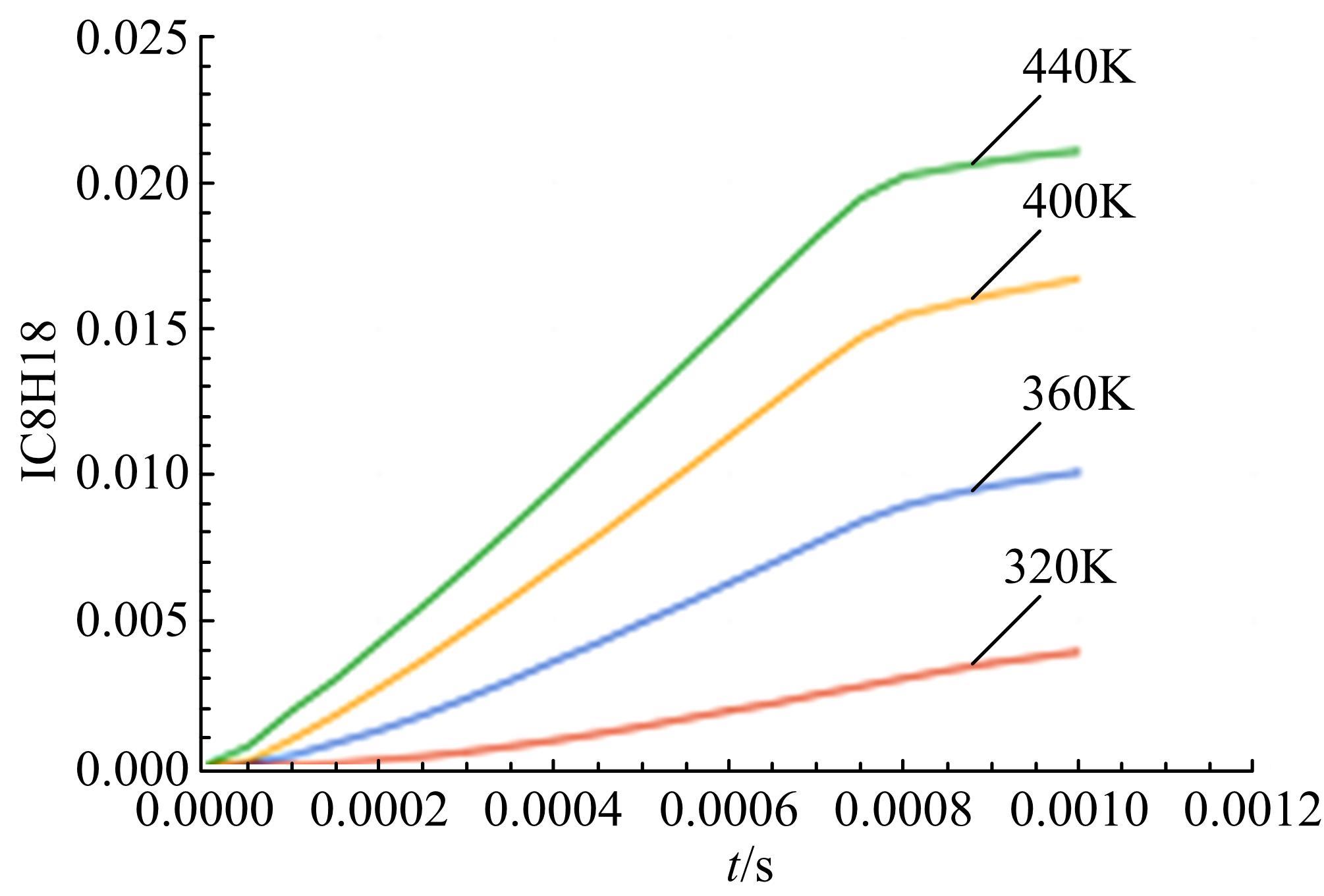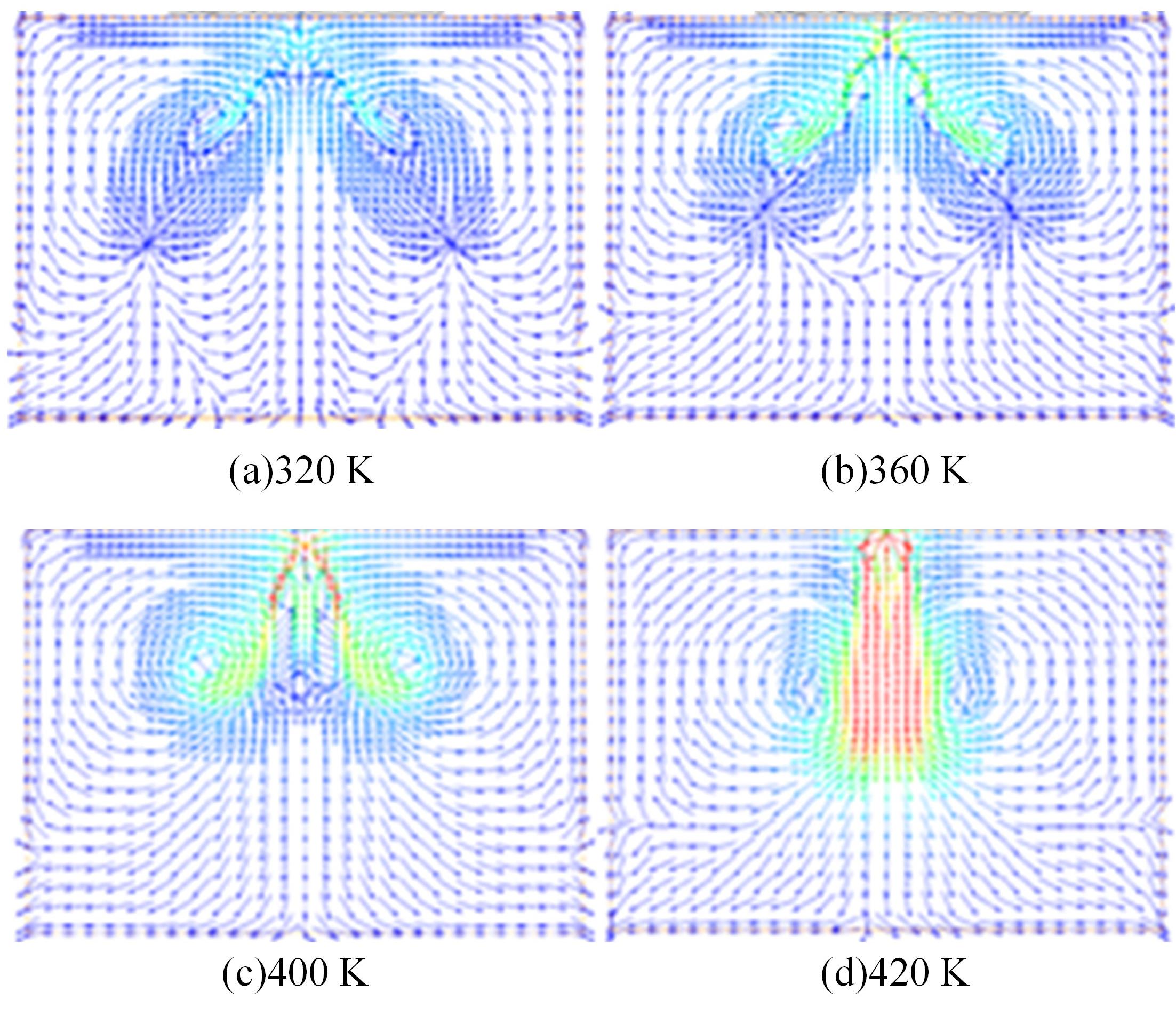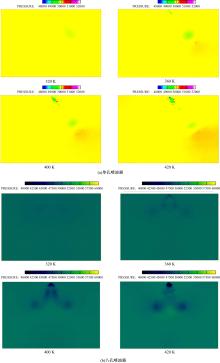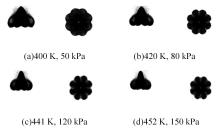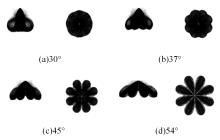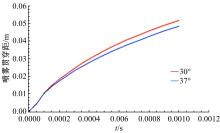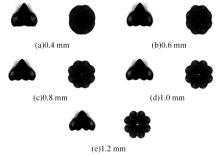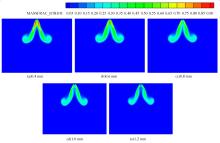Journal of Jilin University(Engineering and Technology Edition) ›› 2023, Vol. 53 ›› Issue (12): 3314-3325.doi: 10.13229/j.cnki.jdxbgxb.20221346
Simulation analysis of influencing factors of flash boiling spray collapse of porous injector
Fang-xi XIE1( ),Shi-jie ZHAO1,Zi-sen WANG1,Shuang LIU2,Xiao-ping LI1(
),Shi-jie ZHAO1,Zi-sen WANG1,Shuang LIU2,Xiao-ping LI1( ),Cheng ZHANG3
),Cheng ZHANG3
- 1.College of Automotive Engineering,Jilin University,Changchun 130022,China
2.FAW-Volkswagen Automotive Co. ,Ltd. ,Changchun 130011,China
3.China FAW Group R&D Institute Co,Ltd. Powertrain Development Department of New Energy Development Institute,Changchun 130013
CLC Number:
- TK411
| 1 | Curtis B. US ethanol industry: the next inflection point, 2007 year in review[DB/OL]. [2022-10-05]. |
| 2 | Zhao F, Lai M C, Harrington D L. Automotive spark-ignited direct-injection gasoline engines[J]. Progress in Energy and Combustion Science, 1999, 25(5): 437-562. |
| 3 | Hoffmann G, Befrui B, Berndorfer A, et al. Fuel system pressure increase for enhanced performance of GDi multi-hole injection systems[J]. SAE International Journal of Engines, 2014, 7(1): 519-527. |
| 4 | Xu M, Zhang Y, Zeng W, et al. Flash boiling: easy and better way to generate ideal sprays than the high injection pressure[J]. SAE International Journal of Fuels and Lubricants, 2013, 6(1): 137-148. |
| 5 | He X, Li Y, Liu C, et al. Characteristics of spray and wall wetting under flash-boiling and non-flashing conditions at varying ambient pressures[J]. Fuel, 2020, 264: No. 116683. |
| 6 | Guo H, Ma X, Li Y, et al. Effect of flash boiling on microscopic and macroscopic spray characteristics in optical GDI engine[J]. Fuel, 2017, 190: 79-89. |
| 7 | Akop M Z, Zama Y, Furuhata T, et al. Characteristics of adhesion of diesel fuel on impingement disk wall. Part 1: effect of impingement area and inclination angle of disk[J]. Atomization and Sprays, 2013, 23(8): 725-744. |
| 8 | Li X, Pan H, Dong X, et al. Spray impingement wall film breakup by wave entrainment[J]. Proceedings of the Combustion Institute, 2019, 37(3): 3287-3294. |
| 9 | Li X, Xiao D, Parrish S E, et al. Dynamics of spray impingement wall film under cold start conditions[J]. International Journal of Engine Research, 2020, 21(2): 319-329. |
| 10 | Zeng W, Xu M, Zhang G, et al. Atomization and vaporization for flash-boiling multi-hole sprays with alcohol fuels[J]. Fuel, 2012, 95: 287-297. |
| 11 | Saha K, Som S, Battistoni M, et al. Numerical investigation of two-phase flow evolution of in-and near-nozzle regions of a gasoline direct injection engine during needle transients[J]. SAE International Journal of Engines, 2016, 9(2): 1230-1240. |
| [1] | Zhi ZHENG,Pei YUAN,Xuan-hui JIN,Si-si WEI,Bo GENG. Experimental on composite flexible anti⁃collision fender of bridge pier [J]. Journal of Jilin University(Engineering and Technology Edition), 2023, 53(9): 2581-2590. |
| [2] | Feng WANG,Shuang-rui LIU,Jia-ying WANG,Jia-ling SONG,Jun WANG,Jiu-peng ZHANG,Xiao-ming HUANG. Size and shape effects of wind drag coefficients for porous structures [J]. Journal of Jilin University(Engineering and Technology Edition), 2023, 53(6): 1677-1685. |
| [3] | Chun-li WU,Shi-ming HUANG,Kui LI,Zheng-wei GU,Xiao-ming HUANG,Bing-tao ZHANG,Run-chao YANG. Analysis of pier action effect under flood based on numerical simulation and statistical analysis [J]. Journal of Jilin University(Engineering and Technology Edition), 2023, 53(6): 1612-1620. |
| [4] | Zheng-wei GU,Pan ZHANG,Dong-ye LYU,Chun-li WU,Zhong YANG,Guo-jin TAN,Xiao-ming HUANG. Earthquake⁃induced residual displacement analysis of simply supported beam bridge based on numerical simulation [J]. Journal of Jilin University(Engineering and Technology Edition), 2023, 53(6): 1711-1718. |
| [5] | Hai-bin WEI,Shuan-ye HAN,Hai-peng BI,Qiong-hui LIU,Zi-peng MA. Intelligent sensing road active ice and snow removal system and experimental technology [J]. Journal of Jilin University(Engineering and Technology Edition), 2023, 53(5): 1411-1417. |
| [6] | Jing-fu JIN,Xin-ju DONG,Zhi-cheng JIA,Kang WANG,Lian-bin HE,Meng ZOU,Ying-chun QI. Optimization of the tread plate-spring structure of flexible metal wheel with plate-spring [J]. Journal of Jilin University(Engineering and Technology Edition), 2023, 53(4): 964-972. |
| [7] | Zhuang-zhuang LIU,You-wei ZHANG,Peng-yu JI,Abshir Ismail Yusuf,Lin LI,Ya-zhen HAO. Study on heat transfer characteristics of electric heating snow melting asphalt pavement [J]. Journal of Jilin University(Engineering and Technology Edition), 2023, 53(2): 523-530. |
| [8] | Li-zhao DAI,Liang ZHOU,Xiao-wen YANG,Lei WANG. Meso-scale numerical simulation of interfacial bond behavior of corroded RC beams based on connector element [J]. Journal of Jilin University(Engineering and Technology Edition), 2023, 53(10): 2886-2896. |
| [9] | Xiao-hong LU,Jin-hui QIAO,Yu ZHOU,Chong MA,Guo-chuan SUI,Zhuo SUN. Research progress of temperature field in friction stir welding [J]. Journal of Jilin University(Engineering and Technology Edition), 2023, 53(1): 1-17. |
| [10] | Zhi ZHENG,Bo GENG,Fu-min WANG,Jun-hong DONG,Si-si WEI. Improvement of protective ability for existing low⁃grade concrete guardrail [J]. Journal of Jilin University(Engineering and Technology Edition), 2022, 52(6): 1362-1374. |
| [11] | Chen HUA,Run-xin NIU,Biao YU. Methods and applications of ground vehicle mobility evaluation [J]. Journal of Jilin University(Engineering and Technology Edition), 2022, 52(6): 1229-1244. |
| [12] | Jian SUN,Bin PENG,Bing-guo ZHU. Internal thermodynamic characteristics and performance test of new oil⁃free scroll compressor [J]. Journal of Jilin University(Engineering and Technology Edition), 2022, 52(12): 2778-2787. |
| [13] | Yong-hui SHANG,Lin-rong XU,Wei-zheng LIU,Yu CAI. Dynamic features of transition section between improved soil and A⁃filled of heavy⁃haul railway [J]. Journal of Jilin University(Engineering and Technology Edition), 2021, 51(6): 2128-2136. |
| [14] | Yan-feng JIA,Da-yi QU,Lu LIN,Rong-han YAO,Xiao-long MA. Coordinated speed control of connected mixed traffic flow based on trajectory [J]. Journal of Jilin University(Engineering and Technology Edition), 2021, 51(6): 2051-2060. |
| [15] | Zong-wei YAO,Xu-dong GAO,Gang LIU,Qiu-shi BI. Research on working performance of vertical screw stirring mill based on numerical simulations [J]. Journal of Jilin University(Engineering and Technology Edition), 2021, 51(5): 1642-1650. |
|
||



